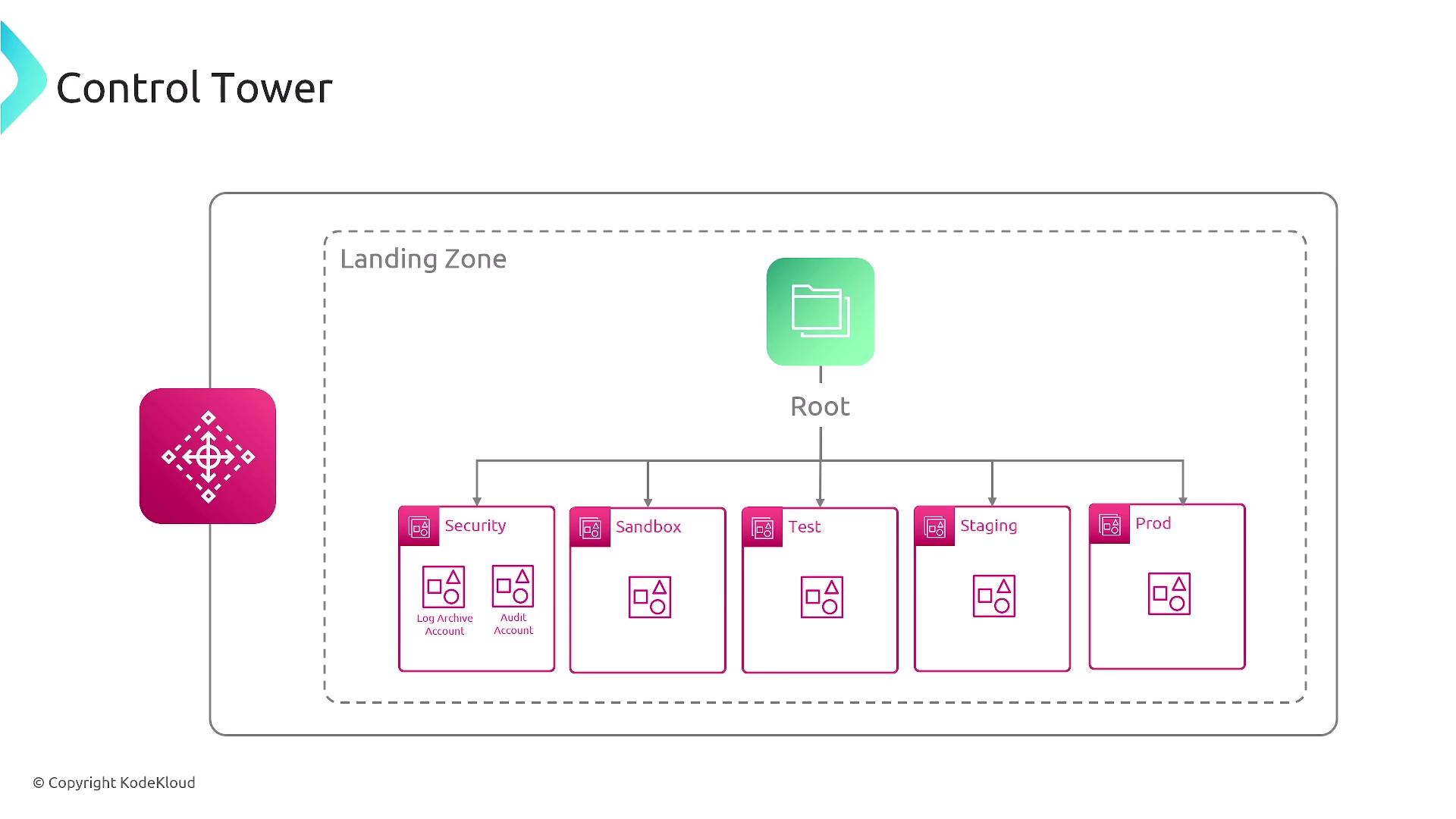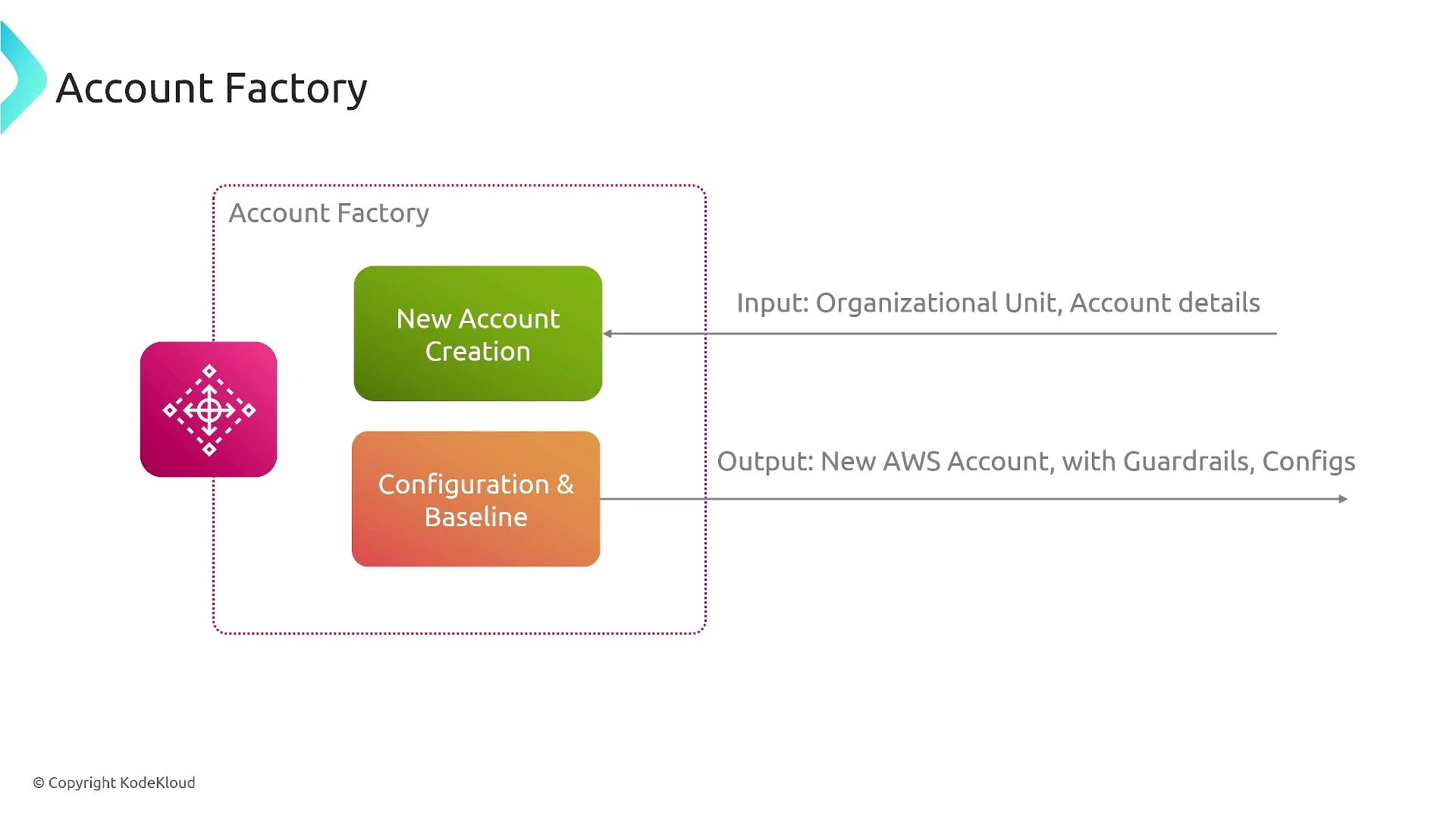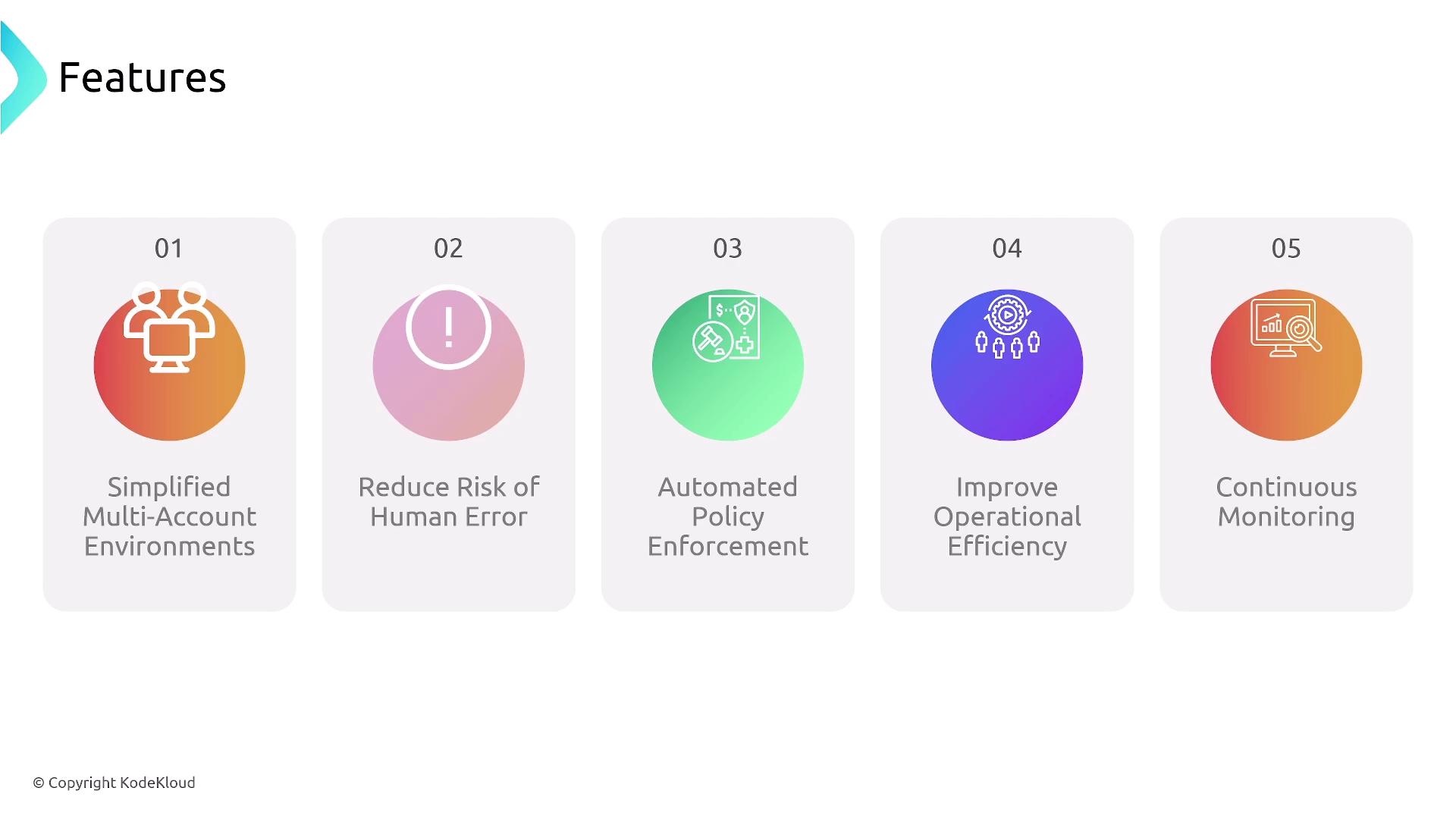AWS Certified SysOps Administrator - Associate
Domain 4 Security and Compliance
Exploring Multi Account Security With AWS Control Tower
Welcome to this lesson on leveraging AWS Control Tower to implement multi-account security in cloud environments. This guide is part of our comprehensive series on cloud security best practices and provides step-by-step insights into how AWS Control Tower streamlines the management of multiple AWS accounts.
What is AWS Control Tower?
AWS Control Tower is a service that incorporates best practice configurations to help you quickly establish a secure and compliant landing zone for your organization. By integrating AWS Organizations, IAM Identity Center (formerly Single Sign-On), AWS Config, and Service Control Policies (SCPs), it simplifies the complex task of managing multiple AWS accounts.
Imagine setting up test, staging, and production environments, along with dedicated management, security, and logging accounts for CloudTrail—all with one centralized solution. AWS Control Tower makes this possible by ensuring that your organization follows a consistent security and governance structure.
Establishing a Landing Zone
Control Tower establishes a robust landing zone, which serves as the foundation for a well-architected multi-account environment. In this setup, you create an organization with a root account and multiple organizational units (OUs) such as production, staging, test, sandbox, and security. For example, the security OU typically includes specialized accounts for log archiving and auditing:

This structured approach ensures that audit logs and archived data are securely stored and protected from unauthorized modifications. Without such a centralized system, managing separate AWS accounts can become as complicated as coordinating multiple ships without a unified navigation system.
Guardrails: Prevention and Detection
AWS Control Tower incorporates two types of guardrails to maintain security and compliance:
Preventative Guardrails:
These guardrails actively block actions that might lead to security risks or compliance issues. For instance, they prevent the creation of public S3 buckets or the launching of EC2 instances without a key pair.Detective Guardrails:
These guardrails configure tools like AWS Config and CloudTrail to monitor, log, and alert you about non-compliant activities. While they do not block the action, they provide crucial insights for forensic analysis and post-incident investigations.
![]()

Note
Both sets of guardrails come pre-configured with AWS Control Tower, but you always have the flexibility to add additional custom guardrails as needed.
Account Factory
A pivotal feature of AWS Control Tower is the Account Factory. This automation tool streamlines the provisioning of new AWS accounts by applying your organization’s baseline configurations such as AWS Config, CloudTrail, and relevant policies right from the start. This ensures consistent security and compliance while expanding your cloud infrastructure to meet growing demands.

Benefits of AWS Control Tower
Implementing AWS Control Tower provides several significant benefits:
| Benefit | Description |
|---|---|
| Simplified Multi-Account Management | Centralizes the setup and governance of multiple AWS accounts. |
| Reduced Risk of Human Error | Automation minimizes manual configurations that could lead to misconfigurations and security breaches. |
| Automated Policy Enforcement | Pre-configured and custom guardrails ensure consistent compliance across all accounts. |
| Improved Operational Efficiency | Built-in monitoring and continuous auditing facilitate prompt detection and resolution of issues. |
| Scalable Account Provisioning | The Account Factory enables efficient setup of new accounts with baseline security settings. |
Note
Leveraging AWS Control Tower reduces the complexity involved in managing a large-scale, multi-account environment while ensuring adherence to regulatory standards and internal policies.

Summary
AWS Control Tower simplifies the creation and management of secure, compliant multi-account environments on AWS. By integrating best practices in organization setup, single sign-on, proactive guardrails, and automated account provisioning, it ensures that your cloud environment is consistently governed, monitored, and secured.
Thank you for following this lesson. For more insights on AWS security best practices, stay tuned for our upcoming articles.
Watch Video
Watch video content